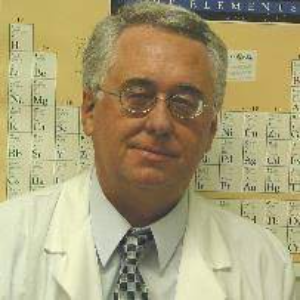Title : Targeted self-navigating multifunctional drug delivery vehicles driven by promiscuous landscape phage proteins
Abstract:
Development of precision medicines acting specifically at the site of disease has been a long sought goal for the last century, starting from pioneering works of Paul Ehrlich, who suggested the concept of site-directed chemotherapeutics or ‘magic bullet’. With the development of nanomedicines, significant progress towards this goal have been reached. In particular, active targeting has been proposed to enhance the therapeutic efficacy of nanomedicines. Unfolding the complexity of the tumor microenvironment has revealed additional biological barriers hindering efficacy of the targeted drug delivery. To overcome specific barriers, it was suggested to supply the tumor-targeting ligands with a combination of multiple ligands with appropriate functions. This trend in using ‘molecular cocktails’ will likely prevail as a necessity for success of actively targeted nanomedicines. To prove this new concept, we developed several actively targeted nanomedicine systems that explore ~500 fusion phage proteins in various specifically designed molecular selection schemes that are based on the desired outcome, for example, ability to bind cancer cellular receptors, penetrate into the cells, accommodate at specific cellular compartments, and ultimately—produce expected cytotoxic effect of the phage protein-targeted nanomedicines. We observed, however, that not all nanomedicine-linked phage protein specifically interacting with cancer cells can induce inhibition of tumor growth in vivo. These and other controversial results discussed recently in the literature, forced us to modify the traditional concept of drug targeting and suggest a novel paradigm called ‘drug navigation’. We used our proprietary polyvalent phage displayed ‘landscape’ peptide libraries to select clones with specificity to various cancer types, which resulted in generating phage protein fusions containing functional motifs with selectivity to various cellular phenotypes and discovery of ‘promiscuous’ multi-motif phage proteins targeted to different cellular receptors. Studying homology of hundreds thousands of binding phage-displayed peptides, we identified short linear motifs containing 3-4 amino acid residues, which accumulate in the displayed peptides during different rounds of selection. We hypothesized that these motifs serving as the elementary binding units in the processes of phage-involved molecular recognition would provide the solid theoretical basis for rational design of molecular probes for studying and control of various biological systems, including tumor microenvironment. Discovery of short motifs serving as elementary binding units during phage selection inspired us to propose the novel “addressed drug navigation” concept, which relies on the use of “molecular self-navigating ligands”, selected from tissue-migrating polyvalent multi-motif landscape phage display libraries and accumulating ‘elementary binding units’ responsible for binding to different tissue cells, as illustrated in the Fig.1..This novel approach promises to replace the existing ‘point to point’ targeting concept for the novel ‘self-navigating’ drug delivery paradigm that can be used as a theoretical basis in development of a novel generation of molecular imaging probes and medications for precise and personal medicine.
Takeaway Notes
• How to use polyvalent phage-display libraries and other phage toolkits for development of targeted selfnavigating multifunctional drug delivery vehicles;
• How to develop tissue-migrating multi-motif landscape phage probes by micro-biopanning in vivo of polyvalent landscape phage displayed libraries;
• How to use the databases of multifunctional peptides and elementary binding units in a rational design of selfnavigating drug delivery systems in accordance with ‘Hub and Spoke’ delivery mode.;
• How to use polyvalent phage-display libraries in other areas of bioengineering (epitope discovery, vaccine development, molecular imaging, etc.)



